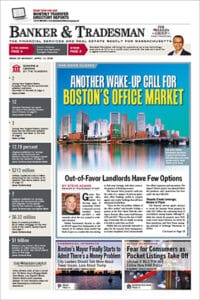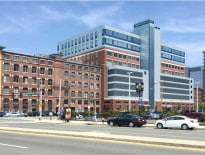On the brink of potential elimination a year ago, the Green Line Extension has steadily progressed to the point where design-build bids should go out by this spring and a finance plan should be submitted to federal overseers by March, according to the state’s timeline.
“Look how far we’ve come,” Braintree Mayor Joe Sullivan, a member of the Massachusetts Department of Transportation board of directors, said at a board meeting Monday.
As John Dalton, the project manager hired in November, assessed a “healthy level of interest” from the industry in working on the project, Sullivan interjected, “This project was dead a year ago.”
“Well, I think I would say for certain, it’s certainly alive,” Dalton replied.
The long-sought trolley extension would bring service from East Cambridge through Somerville and into Medford. The project was put on ice in 2015 after transportation officials estimated its cost had ballooned as much as 50 percent to $3 billion.
The turnaround has hardly been dramatic, featuring incremental steps over months as officials pulled back the scale and cost of the project, brought aboard Dalton – a former Chicago Transit Authority official – and received agreements from Cambridge and Somerville to contribute a combined $75 million toward the extension with a projected $2.3 billion new price tag.
“We’ve kind of already begun the procurement process,” Dalton told the News Service on Monday. He said there is “real momentum” behind the project now.
Last May the MassDOT board and the MBTA’s Fiscal and Management Control Board voted unanimously to move ahead on the stalled project without fully committing to it.
Currently the MBTA is working towards an amended agreement with the Federal Transit Administration, which could unlock nearly $1 billion in federal funding committed to the project. Officials from the FTA, both from the local office and Washington D.C., met in Massachusetts late in January, Dalton said, to go over the state’s plans.
While transportation officials have made progress in identifying new funding sources – including federal highway funds – and reduced the overall cost, a $64.7 million funding shortfall remains, Dalton told the board.
In his presentation to the board, Dalton said the MBTA must identify a complete finance plan to the FTA, as well as a source of financing to cover the cost of operating the new system.
Transportation Secretary Stephanie Pollack said the source and amount of an operating subsidy would be up for discussion in March.
“That’s one of the issues that we are going to need to address with the board next month,” Pollack told reporters. “First we need to review how much we will need, and then we will need to make a proposal on where the money’s going to come from.”
Every mode of MBTA public transit operates at a subsidy to varying degrees. In recent years the MBTA’s roughly $2 billion budget has been supplemented with a $187 million infusion from state lawmakers through the annual budget. As the T management has shrunk its structural deficit, the additional assistance has been directed toward repair projects.
MBTA Fiscal and Management Control Board Chairman Joe Aiello also praised the work on the Green Line Extension.
“I can’t tell you how personally pleased I am about the complete reversal of the dynamic of this project team,” said Aiello, who said the team is “thinking about this entire process strategically.”







